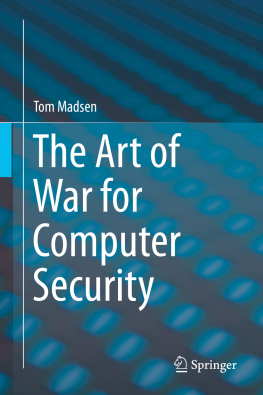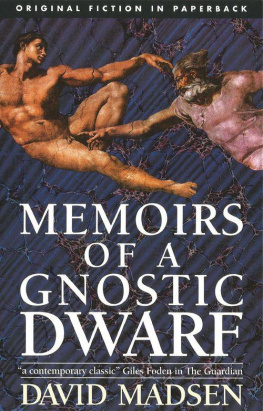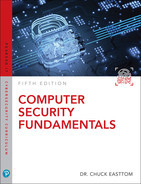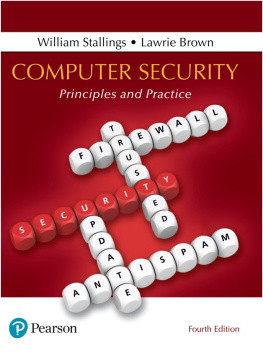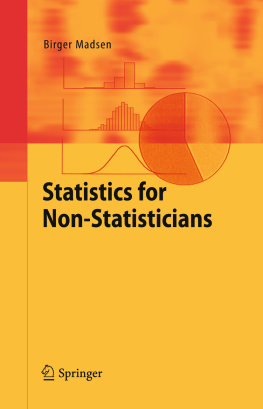Tom Madsen - The Art of War for Computer Security
Here you can read online Tom Madsen - The Art of War for Computer Security full text of the book (entire story) in english for free. Download pdf and epub, get meaning, cover and reviews about this ebook. year: 2019, publisher: Springer, genre: Computer / Science. Description of the work, (preface) as well as reviews are available. Best literature library LitArk.com created for fans of good reading and offers a wide selection of genres:
Romance novel
Science fiction
Adventure
Detective
Science
History
Home and family
Prose
Art
Politics
Computer
Non-fiction
Religion
Business
Children
Humor
Choose a favorite category and find really read worthwhile books. Enjoy immersion in the world of imagination, feel the emotions of the characters or learn something new for yourself, make an fascinating discovery.
- Book:The Art of War for Computer Security
- Author:
- Publisher:Springer
- Genre:
- Year:2019
- Rating:4 / 5
- Favourites:Add to favourites
- Your mark:
- 80
- 1
- 2
- 3
- 4
- 5
The Art of War for Computer Security: summary, description and annotation
We offer to read an annotation, description, summary or preface (depends on what the author of the book "The Art of War for Computer Security" wrote himself). If you haven't found the necessary information about the book — write in the comments, we will try to find it.
The Art of War for Computer Security — read online for free the complete book (whole text) full work
Below is the text of the book, divided by pages. System saving the place of the last page read, allows you to conveniently read the book "The Art of War for Computer Security" online for free, without having to search again every time where you left off. Put a bookmark, and you can go to the page where you finished reading at any time.
Font size:
Interval:
Bookmark:
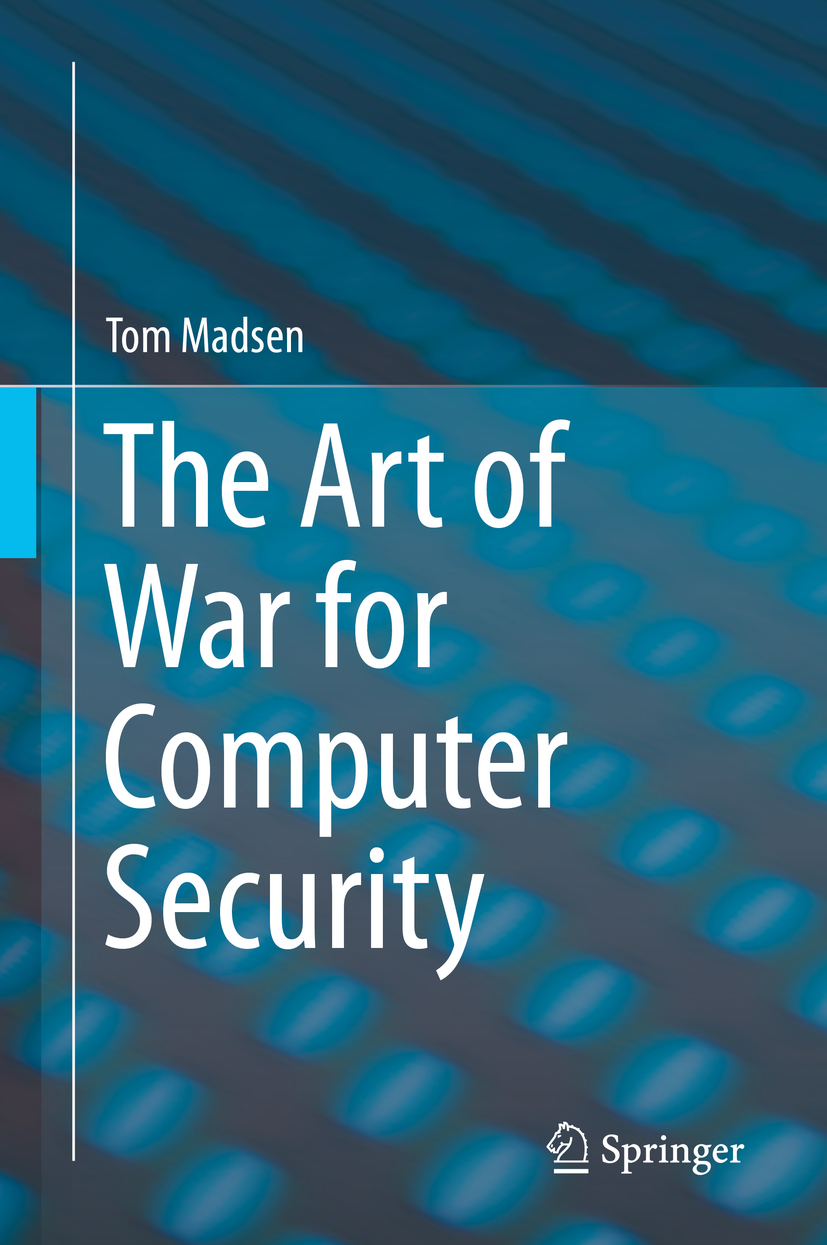

This Springer imprint is published by the registered company Springer Nature Switzerland AG.
The registered company address is: Gewerbestrasse 11, 6330 Cham, Switzerland
Welcome to this book, The Art of War for Computer Security . Books on the ancient Chinese classic text The Art of War as applied to areas like politics and business have been written before, so why now one on computer security? Is it even applicable to computer security? I, of course, think yes. Otherwise why would I write this book? The Art of War is aimed at conflict between nations, and as we have seen, it can be applied to conflict between companies and political parties as well. The key word here is conflict. Computer security is meant to protect information or information systems against compromise, from either accidents or malicious attacks. Malicious attacks against information or systems mean that we now have a conflict between the attacker and the victim organization, and this conflict can be governed, managed, and mitigated by using some of the points made in The Art of War , some 2500 years ago!
The Art of War is about, well, war! So, is this a book about this fancy new concept called cyberwar? No! I have worked for many years within the United Nations, and I have seen the consequences of war up close. War is not a concept which should be applied to anything beyond its original meaning. War on this, war on that. It dilutes the original meaning, and consequences, of war. But I am getting sidetracked; back to this book. The original book has 13 chapters, with individual points made within each of the chapters. There are many quotes from The Art of War in the present book, and these quotes are usually from points in the corresponding chapters. Now, not all of the chapters, or all the points therein, are applicable to computer security, so I have picked out the chapters and points from the original version that can be applied to computer security. So, if you have picked out this book as a guide to the full version of The Art of War , then I am sorry to say that I will disappoint you with this book. You will have to buy one of the many very good books out there covering the full version, something I highly recommend. You might even consider getting one of the versions aimed at one of the many other areas where The Art of War has been applied. These books can, and do, offer other insights into the finer points made in the original version, or even made in the version I have written here.
Who might benefit from reading this book? If you are a computer security professional trying to secure your organizations information systems against attacks, you will benefit from the points made. If you are a manager responsible for securing information systems, you will benefit from this book. If you are an attacker, hopefully a white hat kind of attacker, you will benefit from this book, especially the chapters covering the offensive areas of war. I know that this last point can be controversial, but, as defenders, we absolutely must know how an attacker could go about compromising our information systems! If we do not know how an attack might take place, we cannot defend against that attack. So, yes, there are points made in this book which are solely of benefit to an attacker.
I mentioned earlier that the original book has 13 chapters. I have chosen to largely maintain the original chapter structure. When I say mostly, it is because some of the chapters in the original cannot be applied to computer security. These chapters I have removed from this book. The chapters are Maneuver, Marches, and Terrain. I have added a chapter as well. The first chapter in the book will give you an overview of who Sun Tzu was, and some of his history, at least as much as is known, to give you some of the context in which The Art of War was written those 2500 years ago.
Chapter: Who Was Sun Tzu? Who was Sun Tzu, and how did it come about that he wrote The Art of War ? In this chapter I will give you a little of the history surrounding Sun Tzu, and explain why I think some of the quotes from the original work can be applied to cybersecurity.
Chapter: Estimates. This is one of the longer chapters of the book. Estimates in the context of computer security covers how you go about preparing your infrastructure and staff for the inevitable attack or compromise, and the various ways a motivated attacker might try to deceive you during an attack.
Chapter: Waging War. Why are we continuously being attacked? What are the attackers after, and how should we best respond to an attack? This is one of the chapters where many of the points made are of equal benefit to both attackers and defenders.
Chapter: Offensive Strategy. This might sound like a chapter for attackers only, but as defenders we have to know how an attacker might go about achieving his/her goals. We also need to know what an attacker is after, before we can mount an effective defense.
Chapter: Dispositions. Here we are looking into how you arrange yourself and your organization in preparation for an attack. This covers things like training of staff, both IT and general staff, to ensure that they are aware of their responsibilities.
Chapter: Energy. How do you conduct an attack or a defense with a minimum of energy and resources spent? In this chapter we look at how you go about securing your infrastructure in the most efficient manner. Cost is always a parameter for investments; this chapter will give you pointers on how to maximize the resources you have available.
Font size:
Interval:
Bookmark:
Similar books «The Art of War for Computer Security»
Look at similar books to The Art of War for Computer Security. We have selected literature similar in name and meaning in the hope of providing readers with more options to find new, interesting, not yet read works.
Discussion, reviews of the book The Art of War for Computer Security and just readers' own opinions. Leave your comments, write what you think about the work, its meaning or the main characters. Specify what exactly you liked and what you didn't like, and why you think so.

